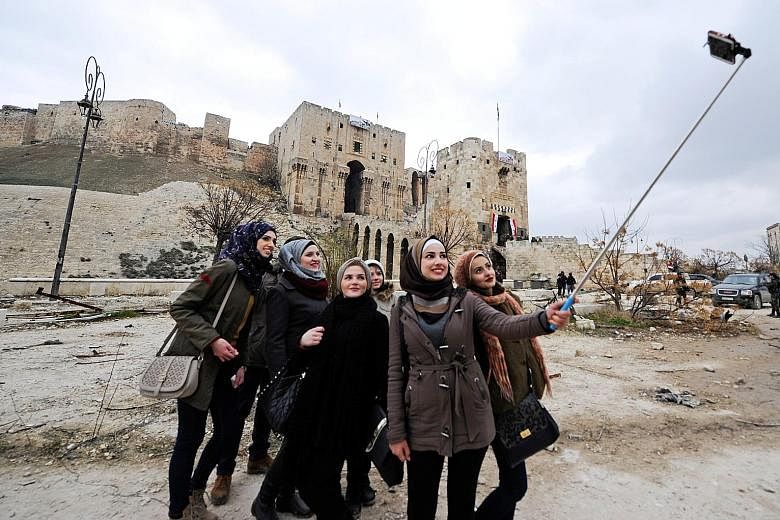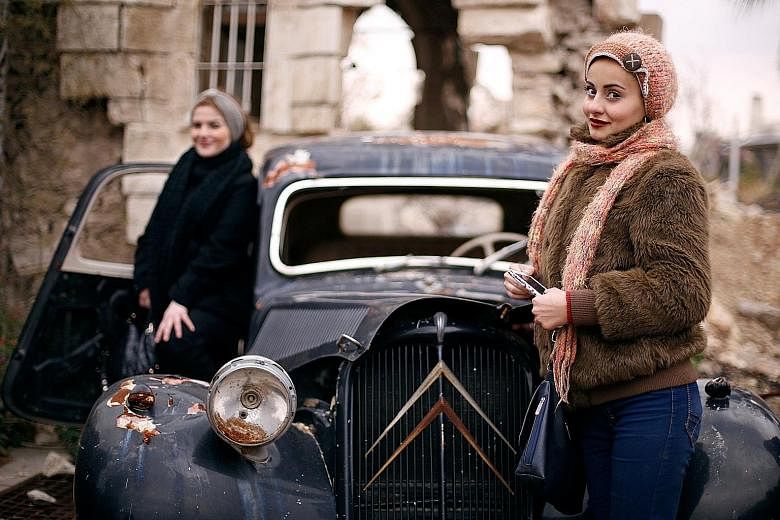ALEPPO • After years of fighting in Aleppo, much of Syria's largest city has been destroyed. Entire neighbourhoods in the rebel-held east have been reduced to rubble by government air strikes, with civilians forced to survive on limited food and medical supplies.
Now, as the battle for the city reaches its final stages, visitors are returning to the historical sites at the city's centre - and taking selfies amid the ruins.
Photographs taken last Saturday by Reuters photographer Omar Sanadiki show groups of visitors in Aleppo's ravaged Old City, once one of Syria's most lauded tourist spots.
In one photograph, a group of women is shown using a selfie stick outside the city's Citadel - a mediaeval and fortified palace that sits at the centre of the Old City. The Citadel, occupied by government forces as a base when the fighting in Aleppo began, came under heavy fire from rebels in April 2013, badly damaging it.
In another image, a woman posed by a car outside the 150- year-old Carlton Citadel Hotel, which lies in ruins after the Islamic Front rebel group blew it up in 2013 with explosives placed in tunnels it had dug underneath.
Other images show visitors at the Old City's Umayyad mosque, once one of the largest and oldest mosques in the city. Its famous minaret, built in 1090, was destroyed during fighting in 2013.
Until recently, the government had classified the Old City a military zone, with only troops, passing journalists and a handful of civilians allowed in. Earlier this month, government forces were able to push the remaining rebels out. Now, in a mark of seeming normality, visitors are returning to the Old City. "I was afraid to come, but they encouraged me and brought me here," one woman told a reporter with Euronews.
For the government, the sight of photograph-taking tourists anywhere in Syria is welcome.
Before the war, Syria was renowned not only for its Unesco World Heritage sites such as Aleppo's Old City but also for its beaches, food and Arabic schools, attracting visitors from all over the world. About 8.5 million tourists came to the country in 2011, according to the Tourism Ministry, with the industry contributing about 13.5 per cent of Syria's gross domestic product that year.
However, those numbers have plunged dramatically since the war started. In 2014, officials said about 400,000 tourists visited the country, mostly for religious reasons, though analysts estimated that the real number could be lower.
WASHINGTON POST


